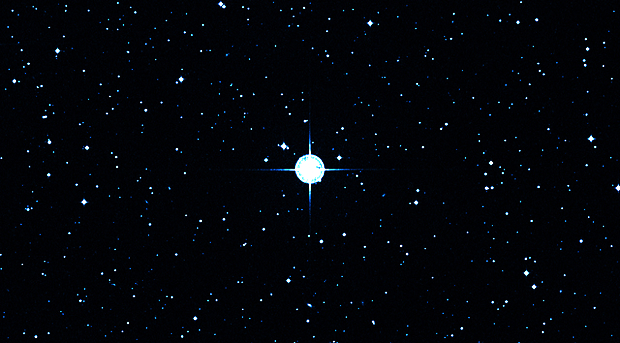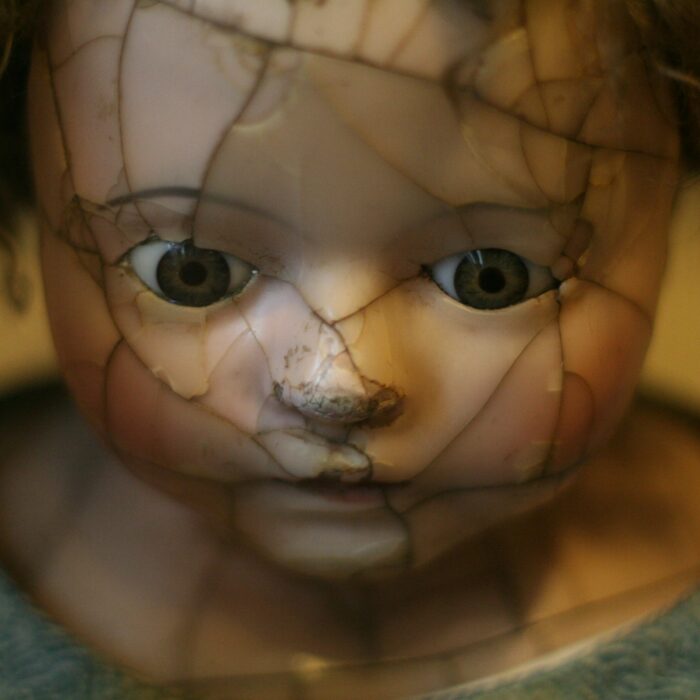You have no items in your cart. Want to get some nice things?
Go shopping
I didn’t think this day would ever come. It wasn’t until they twisted on the helmet and gave me the thumbs up that I was really sure. Well, pretty sure, anyway. My ship was designed to leave our solar system and head out on a 10 year voyage to the nearest stars, the binary Centauri A and B and their closer neighbor, the red star, Proxima. The news feeds called it the First Interstellar Mission — to reach a planet scientists believed could support human life. Of course, the real reason for the trip was something else completely, and besides, it wasn’t the first mission. Fact is, no one knew that there had been a previous mission.
***
Everything was dark. Either I was awake or just dreaming about waking up. I moved my fingers along the edge of the console, out to its center where I was pretty sure the cabin light toggle was located. After a moment, my blurry reflection stared back at me from one of two transparent panels. Beyond that, the deep black firmament of the universe was speckled with stars, but these were invisible to me, no matter how much I squeezed my eyes. That I was now awake meant that my ship had reached Centauri — that’s what the automated life support systems were supposed to do. But I just couldn’t see well enough to be sure of anything more than my stubbly face staring back at me.
After a few frustrating minutes, the instrument readouts merged. I could focus again. I was supposed to be about four light-years away from Earth, but the monitor was telling me a different story. My ship was barely beyond the planetoid Pluto — nowhere near Centauri.
Of the two possible reasons to be brought out of stasis, I figured this must be the second. Since I could just make out the vague outline of Pluto, the Estrellita must somewhere nearby. My heart rate kicked up and I felt my armpits begin to cloy. The Estrellita was the first interstellar mission ship, and it took off five years ago.
As feeling returned to my arms and fingers, I made some adjustments to the monitor. A glowing red arrow targeted a pinpoint with a tagged message confirming the location of the Estrellita. It was not moving. I opened a channel and tried a hail. After several minutes of cosmic static, I turned the frequency to the Central Feed and listened in for a few minutes.
Edgers were in the news again. They had become a dominant force in religion and politics back on Earth. I can still remember the days when they were dismissed as fanatics and loons. Now, things were very different. It all started when some scientists claimed to have noticed discrepancies in their astronomical investigations. Then they thought that orbiting observatories would clarify the matter, but other oddities cropped up making the situation worse.
Edgers believed everything we observed beyond our solar system was an illusion. Stars and galaxies were no more than special effects, cleverly positioned lights in the sky designed to fool us. They believed that our solar system was locked in a cocoon, a shell speckled with images of stars. There was no infinite universe. In their view, the whole idea was an impossibility, a scam. We were enclosed in a sphere, and that was that.
They considered mankind to be the superior, and only, intellect at the center of the universe, which began and ended with solar system. Something alien, or evil, or both, had created the cocoon, and it was up to us to defeat it and discover the real universe beyond. The Edger movement had become a religious and political force, which leaped across traditional boundaries, creeping into the ruling elite in most countries. It wasn’t long before dissention became a crime. Non-believers were identified as part of a conspiracy, and were either considered ignorant and subjected to re- education, or were made to disappear.
Thankfully, out here, all that was but a distant memory. It didn’t make sense. There were always anomalies and inconsistencies. Such confusion was the natural result of our limited science, our flawed understanding.
Central’s mission was two-fold—we were to reach another star system. Not just to find another planet like the Earth, but perhaps more importantly, to debunk the Edgers. Sometimes they reminded me of the flat-earthers of just a few centuries ago.
I cranked up the power, switched frequencies, and typed in a message. It would take the better part of a day for a response to arrive. I would have loved to see the faces of the flight controllers back at Central.
In the meantime, I needed to get closer to the Estrellita. I turned my ship toward her and nudged the engine controls. When she was about 20 kilometers away, her outline began taking shape, although at this distance from the sun, the scant light wasn’t enough to see much. Tweaking the screen image resulted in a distortion that didn’t make sense. The nose of the ship seemed to be missing.
At one kilometer, more details emerged. Though the mid and aft sections were normal, the fore section seemed blunted. The ship looked as if something simply cut off its beak. It may have been hit by something, but that wouldn’t explain why it was motionless — completely motionless.
When I got to within 10 meters, I slowed my ship to a crawl, and approached at an angle from the rear so that I could check out its engines and mid-ship entry portal. Everything looked fine. Not a scratch. I angled alongside and was about get a better view of the nose section, when my blood turned cold.
The front of the ship was really missing. It wasn’t crumpled — it was gone. The remaining edge of the hull was unblemished white metal, which ended abruptly in a smooth line. As I inched toward its fore section, my ship suddenly recoiled with a dull thump, as if it bounced off something solid but elastic. Instrument readouts indicated nothing was there but empty space. A second try at it, and once again my ship was shoved back with that unsettling thump.
Unwilling to test the strength of the force that kept my ship at bay, I backed up to the entry portal. I screwed on my helmet, checked the suit’s oxygen, and debarked. The distance was only a few meters, but the glide across the pitch dark was quick to bring my stomach to my throat. It’s one thing to be snuggly ensconced within a titanium alloyed hull and quite another to step into a bottomless nothing. My helmet’s external spots were aimed on the access handles. One turn and the doorway slid open. I drifted into the closet-sized air lock and cranked the door shut behind me. After five years it was doubtful anyone was still alive, still breathing oxygen, but if they were, I’d hate to be the one who screwed that up.
I punched the fist-sized button to fill the lock with oxygen. Nothing happened. Several more attempts, and still nothing. The ship’s systems must have been depleted, or all the oxygen escaped when the ship ran into trouble.
I grabbed the inner door handle and cranked. It was tough to move, but crank it did, and the inner door slid aside. My spots illuminated the central compartment, the crew’s quarters with two empty bunks. My tongue felt like sandpaper. I was both hoping and dreading that the crew was in the cockpit. The spots drifted to the far wall and I jumped—two suits with helmets stood alongside the bunks. For a second I saw the crew, standing to attention, greeting me with arms extended.
When I reached the cockpit door, I sucked in my breath and pulled it to the side. The first things my lights ran over were the two seats, and they weren’t empty. The crew’s bodies were slumped over, still belted in. One rested its arm on the control panel, as if about to flick a switch. My body shuddered despite the suit’s nominal enviro settings. Getting past the dehydrated heads was one thing, but what really bothered me was that the cockpit was intact. The whole thing was in one piece. It didn’t make any sense. How could the nose be cleaved off and the control room within still be here?
I gave the crew another look — a long one — and mouthed a silent prayer before returning to mid-ship. With no power and no oxygen, they probably asphyxiated. The power must have run down, but the engines were designed to run for decades. I decided to go back outside, to see if I could figure out exactly what this ship ran into.
If it wasn’t for the odd missing nose, the ship looked perfect — preserved forever in the vacuum of space. I grappled my way forward, all the while looking about for debris. I glanced at the stars behind me, along with nearby Pluto, and Uranus and Jupiter beyond. Earth, so many millions of miles away, was now just a fleeting image in my overworked imagination. At this distance, the sun was just a bright star nearly lost to the backdrop of the Milky Way. When I turned my gaze back, I was overcome with nausea.
Looking ahead, past the missing nose cone, I saw the stars I expected to see, but there was something disturbing about the view. It was as if I was staring at a projection on a screen — a map of the universe, all flattened out. When I reached the edge of the missing section, the effect was so pronounced that I unconsciously raised an arm and extended it to one of the stars. To my amazement, I touched it.
My arm jerked back before I realized what had happened. A few moments slogged by before the suit’s systems cleared my visor of an upwelling of condensate. I was confused, very confused. I reached for the star again, poked it, and watched it move away. A line of spittle landed across the inside surface of my visor. I closed my mouth and swallowed hard. When I pulled back, the star returned to its original position. I brushed my hand against the space in front of me, and felt a resistance, like I was rubbing the surface of a large rubber balloon.
Maybe this was a force field of some kind. That would explain what happened to the Estrellita. Stuck in the field. But a forcefield out here? Where’s it coming from? There was nothing out here except a few asteroids and planetoids smaller than Pluto.
I glanced back at the stars, which still undulated slightly, as if threaded onto some vast wall tapestry. The heads-up display inside my visor was blinking — a small square of stars was highlighted along with their names and distances. Everything looked normal, except for the star that I had touched. That one was still dancing at a measured distance of ten light-years. Of course, that was impossible.
I entered the Estrellita again. I unstrapped the pilot and guided him out the door into the cabin, and did the same with the co-pilot. When I turned back to the instrument console, something bumped into my visor. Drifting in front of me was a single finger, pointing with every complete rotation, as if to say, “Watch out. Be careful. Don’t do this.”
The bodies were desiccated and fragile. A finger must have broken off as I nudged them out of the cockpit. My shaking returned and I didn’t expect it to stop anytime soon.
I swung the pilot’s seat aside, and flung open a cabinet door beneath the console. My spots confirmed what I suspected was there from the design of my own craft. The fore access door — a design feature which provided the occupants with a secondary exit in case something went wrong with the air-lock. It was a hinged metal panel held in place by a single locking mechanism. I was guessing it was far enough forward that it would open to the other side of this mysterious curtain of stars.
My hands were slick and sliding inside my gloves as I reached out to unlock the panel. Two over-sized wing nuts held a bracing arm against it. One came off easily; the second took some effort before it gave way. My lungs were heaving when I shoved the arm up and away from the door.
The door swung in easily, and at once I was bathed in a light intense enough to overwhelm my visor’s automatic shielding. Even with my eyes closed, the light seeped through my lids, painful on my retinas. I pushed myself back, turning away from the door, and slammed head first into the pilot’s seat. Then I heard voices.
“Everton.” The sound repeated. “Everton.” I could hear my name spoken through the vacuum of space, through my helmet.
How the hell was that happening? I did not open my eyes for fear of blinding them.
“Have you decided?”
Decided what? Who was speaking?
“The Edger Council awaits your decision.”
Not knowing if I would be heard, I shouted, “Who are you?” There was a pause. I don’t know for how long, as I lost track of time. My temples were pounding so loudly that I wasn’t sure I could hear a response. I waited and waited, and after a time, the brightness either lowered or my eyes got used to it. I chanced a quick flicker, a rapid open-and-shut. In that flash I saw my hands. My gloves were gone.
“Don’t play games with us. This is your last chance.”
The voice again. I forced my eyes to remain open long enough to turn into the light and saw two shadows, no … silhouettes. Two beings had entered the cockpit. They must have come in through the exit panel.
I spoke, but mostly to myself. “I don’t understand.” It was then I noticed that my visor was gone.
“He needs more time.” A different voice.
“What have you done to me? Where am I?” I tried to move, to rise.
“You’ll come around if you know what’s good for you.” The shadows left through the panel doorway. The rectangular bar of light beneath shrunk to a thin vertical strip. An eye appeared along that strip, roving, as if disembodied and floating about, and then it focused on me.
“Recant and you’ll be freed. Until then, enjoy your stay.” The strip narrowed to a thin line, and then nothing.

About Arthur Doweyko
As a scientist, Arthur has authored 100+ publications, and shares the 2008 Thomas Alva Edison Patent Award for the discovery of Sprycel, a new anti-cancer drug. He writes hard science fiction, fantasy and horror. His unpublished novel, Algorithm, which is a story about DNA and the purpose of humanity, garnered a 2010 Royal Palm Literary Award (RPLA) and is represented by the Literary Counsel Agency, NY. He has published a number of short stories, many of which were finalists in the 2011-2012 RPLA competitions. P'sall Senji was awarded an Honorable Mention in the L. Ron Hubbard Writers of the Future Contest (2012). He is currently working on a new novel, Angela's Apple, wherein a guardian angel that is not an angel falls in love with a human, and together they uncover the greatest conspiracy ever to face mankind. He lives in Florida with his wife Lidia, happily wandering the beaches when not jousting with aliens. www.ArthurMDoweyko.com





A creepy and mysterious science fiction story for #StorySunday today, “Edge” by Arthur Doweyko @aweyken https://t.co/YGpC6wlAVV
Today’s News: Author Arthur Doweyko.
Edge
By Arthur Doweyko
Bravo Arthur.
https://t.co/2wENRXSDbb https://t.co/rY0zdHcNbQ